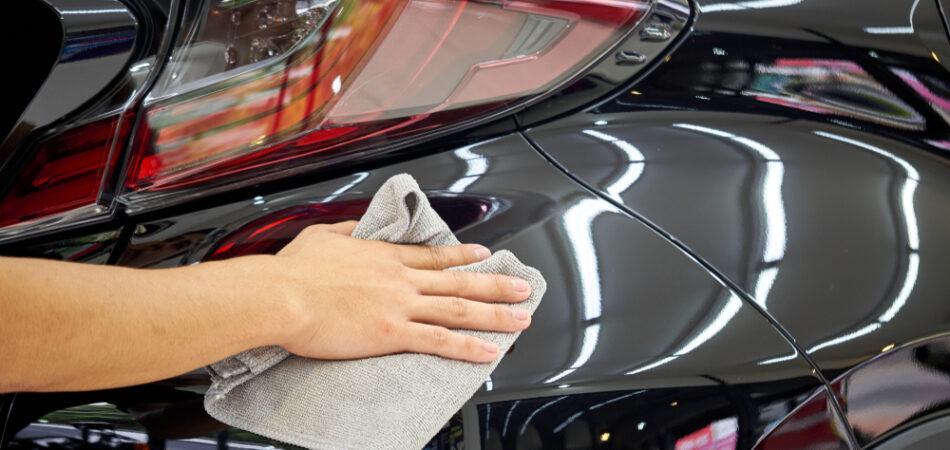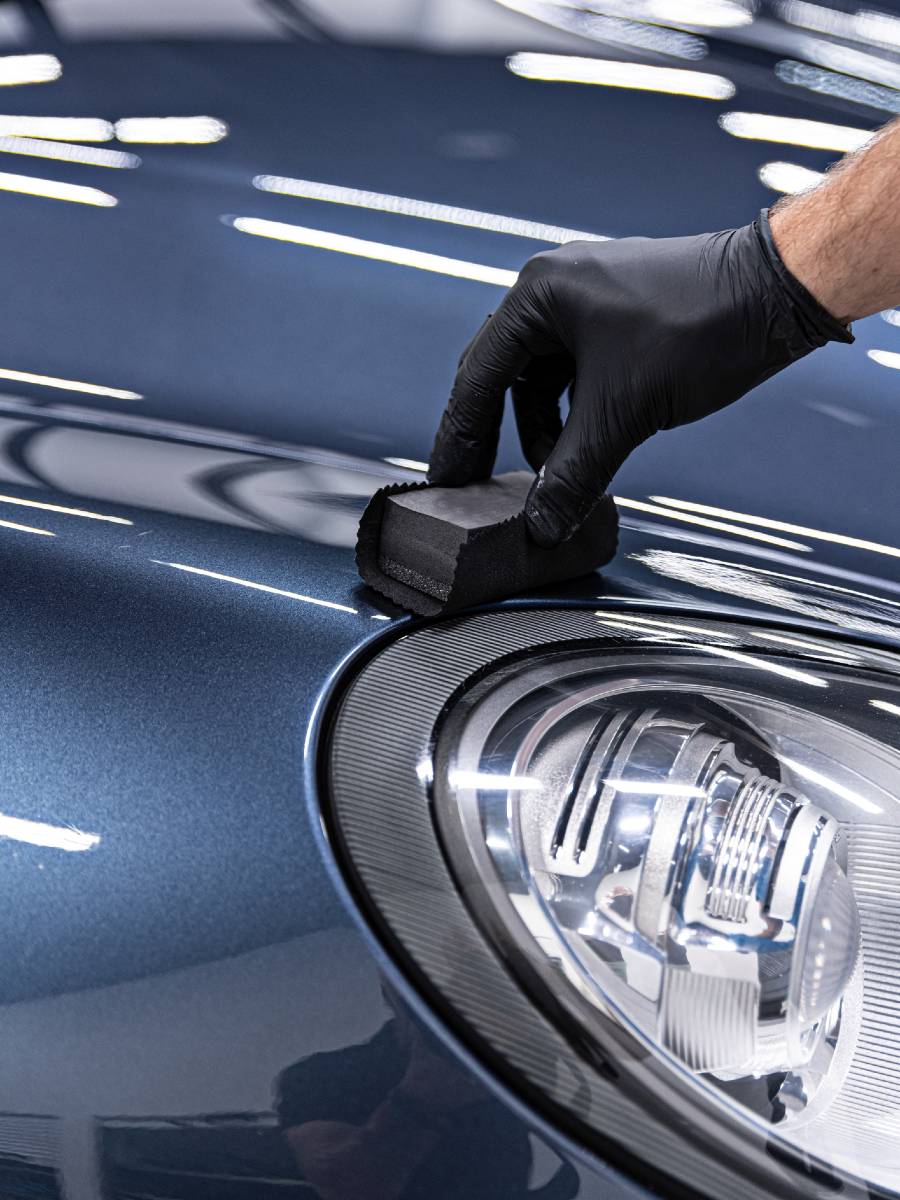Ceramic Layer vs. Traditional Wax: Which Provides Better Long-Term Security?
The discussion between ceramic layers and traditional wax for vehicle protection has gathered considerable interest among vehicle lovers and specialists alike. While both satisfy of protecting paint, their distinctions in longevity, application, and lasting upkeep costs may influence a customer's choice. Ceramic coatings boast premium longevity and resistance to environmental factors, yet the complexity of their application questions about availability and practicality. As we discover these contrasting alternatives, it comes to be vital to take into consideration not just the instant advantages however also the effects for vehicle treatment gradually.
Summary of Ceramic Finish
Ceramic finishing has actually gotten significant appeal amongst automotive lovers and detailers alike as a result of its advanced safety high qualities. This innovative modern technology is created to create a resilient, hydrophobic shield over a vehicle's paint surface area, significantly improving its resistance to ecological contaminants such as dust, UV rays, and chemical discolorations. Unlike conventional wax, which provides a momentary layer of defense, ceramic finishings bond at a molecular degree with the paint, offering resilient durability-- typically expanding past two years with appropriate upkeep.
The application procedure involves thorough prep work of the automobile's surface area, including cleansing and polishing to guarantee ideal adhesion. As soon as applied, the layer cures to develop a robust layer that not only includes depth and gloss to the paint however additionally streamlines upkeep. With its hydrophobic properties, ceramic finish permits water and dust to slide off more quickly, minimizing the frequency of laundries and lessening the danger of swirl marks.
Moreover, ceramic coverings are available in various formulas, permitting customers to pick items customized to their specific demands and choices. In general, ceramic finish stands for a substantial innovation in paint protection technology, delivering premium performance contrasted to standard alternatives.
Introduction of Standard Wax
Typically considered a staple in auto treatment, wax works as a popular choice for those looking for an uncomplicated technique to enhance and secure their automobile's paint - ceramic coating. Automotive wax normally comprises all-natural ingredients, such as carnauba, or artificial compounds, designed to develop a safety layer externally of the paint. This layer not only boosts the automobile's gloss and beam but also provides an obstacle versus environmental pollutants
The application of wax is typically user-friendly, making it easily accessible for both experts and DIY enthusiasts. It can be used by hand or machine, enabling for versatility in the describing process. As soon as applied, wax calls for a treating period, after which it sets to develop a protective shell. Wax is additionally understood for its ability to drive away water, promoting a beading result that helps in the avoidance of water areas and deterioration.
However, while wax works for boosting the aesthetic charm of a lorry, it is essential to keep in mind that the protection it uses might demand more regular reapplication contrasted to alternative items, such as ceramic finishes. In general, standard wax stays a favored choice for those focusing on convenience of usage and instant aesthetic improvement.
Sturdiness and Long Life Comparison
While both ceramic coatings and typical wax offer protective benefits for vehicle paint, their toughness and long life vary substantially. Traditional wax, usually made from natural carnauba or synthetic polymers, typically gives a safety layer that lasts about 3 to 6 months. This reasonably brief life-span demands routine reapplication to keep optimal protection.
On the other hand, ceramic finishes are engineered from sophisticated nanotechnology, developing a covalent bond with the paint surface. This results in a robust, hydrophobic layer that can withstand for two to five years, depending upon the product and environmental conditions. The exceptional toughness of look at this web-site ceramic coatings is attributed to their chemical framework, which supplies improved resistance to scratches, UV rays, and oxidation.

Protection Versus Ecological Factors
Shielding a car's paint from ecological elements is crucial for keeping its appearance and worth over time. Cars are continuously exposed to a range of components, including UV rays, bird droppings, tree sap, acid rainfall, and road gunk, all of which can jeopardize the integrity of the paintwork.
Ceramic coverings offer a robust protection versus these ecological assailants. Unlike conventional wax, which can weaken promptly under UV exposure, ceramic finishes create a resilient, hydrophobic layer that withstands the hazardous results of sunshine and toxic wastes. This advanced modern technology creates a chemical bond with the car's surface, using superior security that lasts for several years, also in rough conditions.
Standard wax, while less complicated to use, typically calls for regular reapplication and uses restricted resistance to impurities and UV see this page rays. Gradually, it can break down, leaving the paint vulnerable to scratches and oxidation. On the other hand, ceramic coverings keep their safety top qualities much longer, dramatically lowering the threat of paint damages and making certain that the lorry preserves its aesthetic charm. Because of this, ceramic finishes are progressively identified as the premium selection for lasting protection against environmental factors.
Application and Maintenance Distinctions
The techniques of application and subsequent upkeep for ceramic finishings and traditional wax differ dramatically, influencing the overall individual experience and effectiveness of each product. find more information Ceramic finishes require an even more intricate application process, generally entailing surface area prep work that consists of washing, decontaminating, and polishing the automobile. When the surface is ready, the ceramic finish is applied in a controlled atmosphere, frequently requiring professional expertise to guarantee correct treating and bonding to the paint.

While both items boost automobile appearance, the longer-lasting defense supplied by ceramic coverings may warrant their first financial investment, in spite of the more demanding application procedure. Alternatively, typical wax continues to be a popular choice for those seeking a simpler, albeit short-term, service.

Final Thought
Finally, ceramic coatings demonstrate considerable advantages over conventional wax in terms of longevity and environmental protection. With a lifespan extending two to 5 years and premium resistance to UV rays, dust, and chemical discolorations, ceramic coatings supply an extra effective service for long-term vehicle upkeep. Although the application procedure might call for specialist experience, the resulting price financial savings and minimized frequency of reapplication emphasize the worth of ceramic finishes for those looking for optimal vehicle defense.
The debate in between ceramic finishes and conventional wax for car security has actually gathered significant focus among automotive fanatics and experts alike. Unlike traditional wax, which gives a momentary layer of protection, ceramic finishes bond at a molecular degree with the paint, providing durable toughness-- typically extending past two years with appropriate upkeep.
While both ceramic finishings and conventional wax deal protective benefits for auto paint, their toughness and durability vary considerably. For auto enthusiasts looking for long-term defense, ceramic coverings provide an engaging advantage over conventional wax products.
In final thought, ceramic layers demonstrate considerable benefits over standard wax in terms of durability and environmental security.